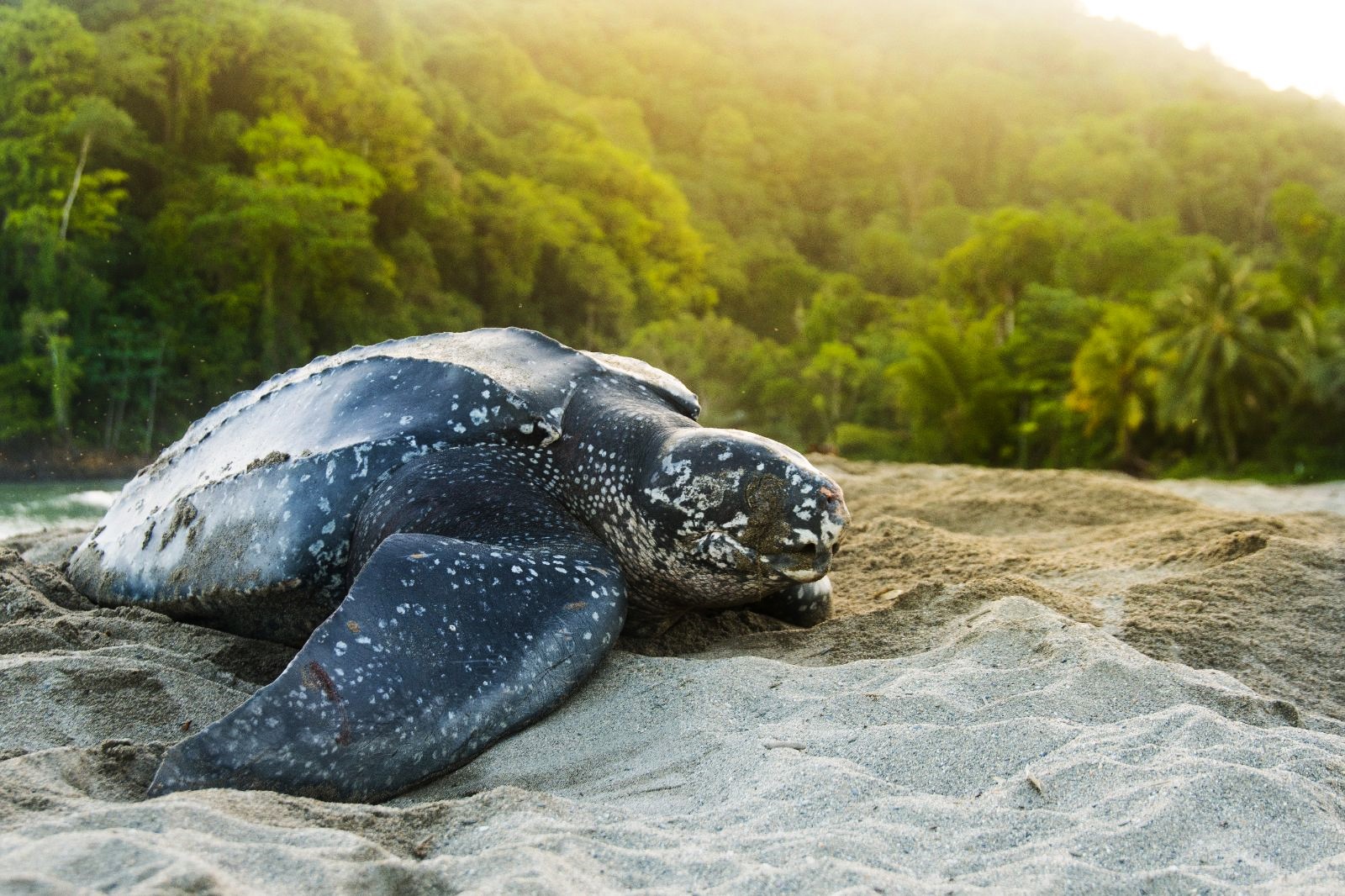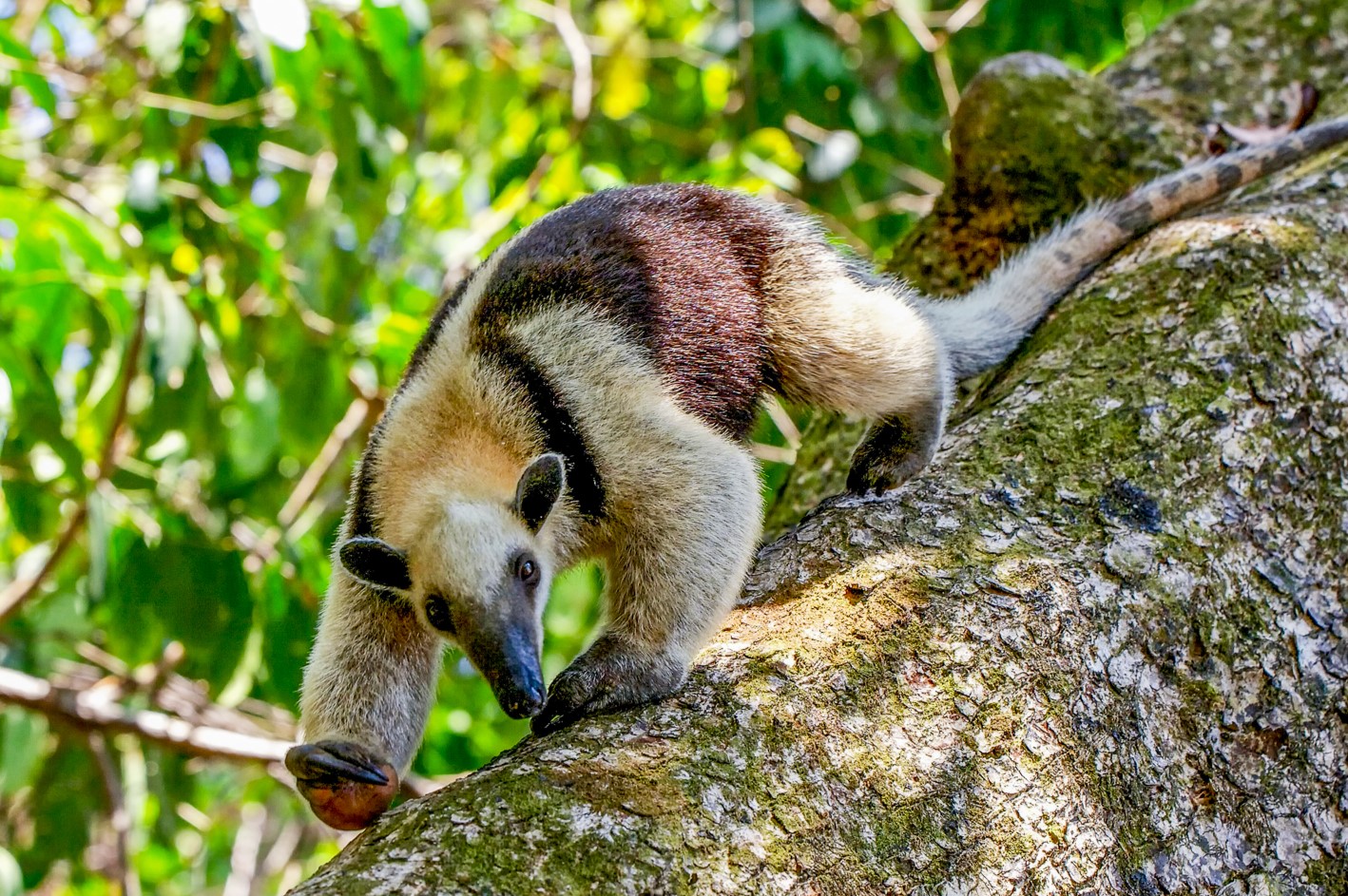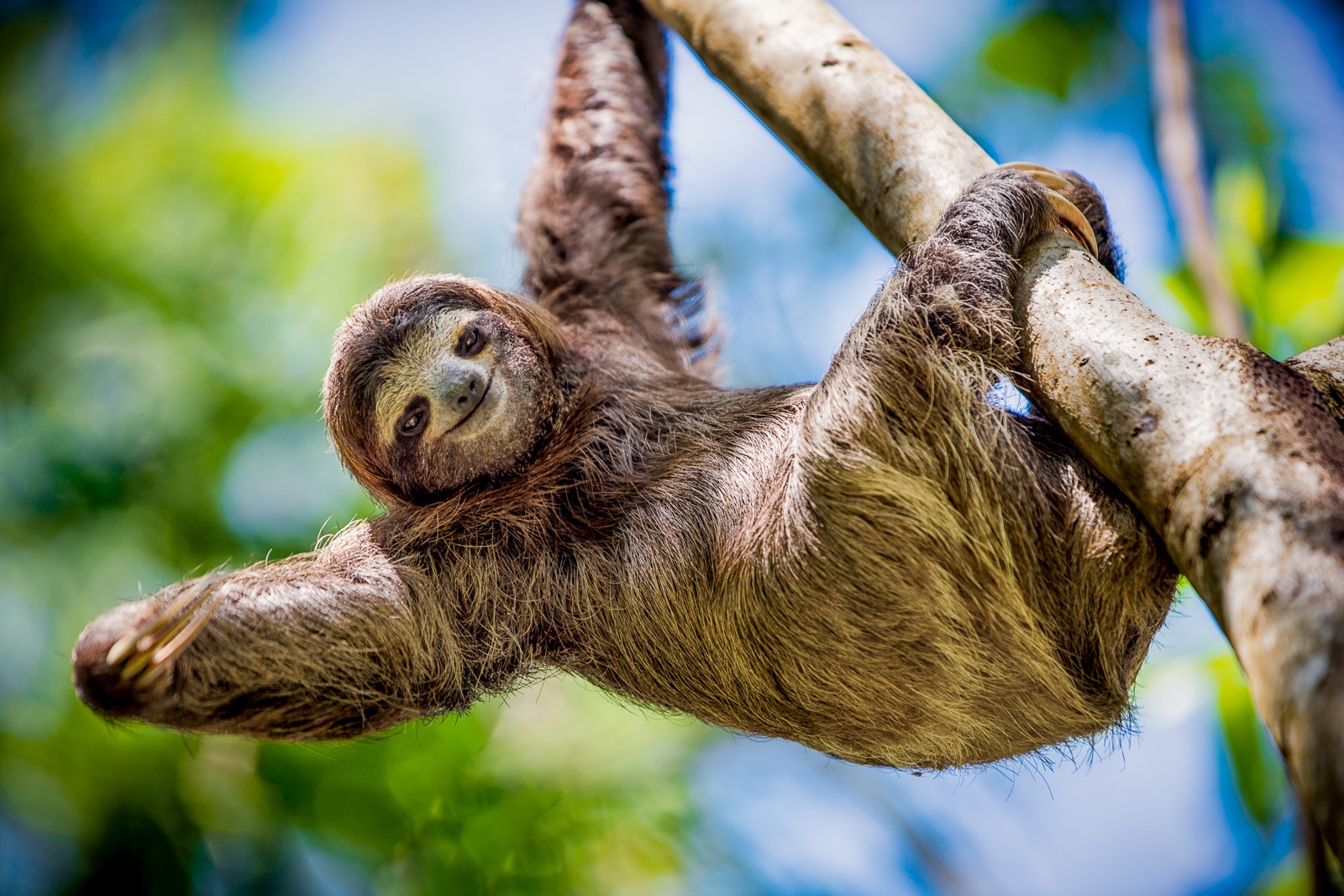One of the most biodiverse countries on Earth, Costa Rica should be at the top of every wildlife enthusiast’s list. From the country’s emblematic toucan to the unusual white-faced coati, there is no end to the diverse amount of wildlife to spot here. With thousands of species spread across the country, there are numerous wildlife hotspots to be found throughout Costa Rica’s wealth of protected natural reserves – each offering something unique. Read our guide below to find out more about the eclectic animals who call Costa Rica their home, as well as the best time and places to see them.
WHERE IS THE BEST PLACE TO SEE WILDLIFE IN COSTA RICA?
Costa Rica’s many parks and forests are brimming with wildlife opportunities. On the heavenly Caribbean coast resides Tortuguero National Park, where trips along winding canals invite the prospect of spotting sea turtles nesting on the sandy banks. Relish your time here by staying at the luxurious Tortuga Lodge, which sits on its own private reserve just outside the park. Meanwhile, jutting out from the Pacific coast is the Osa Peninsula, where you'll find Corcovado National Park. This dense rainforest reserve is home to all manner of interesting animals, such as prowling big cats and the unusual Baird’s Tapir. Encircled by the peninsula is the Golfo Dulce, one of the best places to see marine life such as humpback whales and dolphins. Enjoy a few nights at Lapa Rios, an eco-lodge nestled into the peninsula's lowland rainforest, for unparalleled comfort. A trip to Monteverde Cloud Forest is certain to delight birdwatchers with its vibrant population of quetzals, hummingbirds, toucans and parrots.
WHEN IS THE BEST TIME TO SEE WILDLIFE IN COSTA RICA?

A narrow country with both Caribbean and Pacific coasts, Costa Rica’s climate is inherently varied across its regions. This means there are opportunities to spot wildlife all year round. July to October is the best time to observe the nesting season of hawksbill, loggerhead and green sea turtles in Tortuguero National Park. You may even catch a glimpse of leatherback turtles hatching and returning to sea following their earlier nesting season.
December to April is the best time to visit the Osa Peninsula and the Corcovado National Park. As it's the dry season here, wildlife tends be both more active and easier to spot. It also presents fantastic opportunities for glimpsing humpback whales from the northern hemisphere as they make their migration to the Golfo Dulce. Monteverde Cloud Forest equally experiences its dry months during this time, making it the best time for birdwatchers to plan their visit.
The reality is that the biodiversity to be found in Costa Rica makes it a destination you can enjoy wildlife throughout the year, and our knowledgeable specialists will identify the best places for you to visit according to the season.
WHAT WILDLIFE WILL I SEE IN COSTA RICA?
Monkeys

Several species of monkey make their homes in the rainforests of Costa Rica. Fairly widespread is the howler monkey, appropriately named for its sonorous screeching which can be heard from up to three miles away. One of the more acrobatic species is the spider monkey, which uses its long tail as a fifth limb for quickly swinging through the treetops, while the white-faced capuchin is known for its intelligence, often spotted using tools such as sticks to extract insects from the tree bark. A lesser-spotted species is the squirrel monkey. Best observed in Corcovado National Park, these monkeys are one of the smallest species in the country but also one of the most attractive, flaunting a vibrant orange coat.
Sea Turtles

Being able to witness large sea turtles nesting is amongst the world’s most wonderful wildlife experiences. Tortuguero National Park is a fantastic place to spot the green sea turtle as it is one of the most important nesting grounds for this species in the western hemisphere. It is also a great place to spot the leatherback turtle, known for its leathery black shell and formidable size - growing up to two metres in length! The hawksbill turtle particularly striking with its hypnotic shell patterns and hawk-like beak which it uses to forage for food in hard-to-reach places. Finally, the Olive Ridley turtle is renowned for hosting one of the most spectacular nesting events in the world. Known as an “arribada”, this mass event sees the turtles meets in their thousands on the sandy beaches of the Nicoya Peninsula each year.
Reptiles & Amphibians

Reptiles and amphibians make up some of Costa Rica's most colourful wildlife. This is best evidenced by the country’s poison dart frogs. Despite their vibrant reds, blues and greens, these flamboyant amphibians are extremely poisonous and use their striking façades to ward off predators. A more friendly amphibian is the tree frog. This uniquely adapted arboreal frog is best spotted climbing the trees of Costa Rica’s cloud forests under cover of darkness, so be sure to head out on a night walk to spot one. Clad in vibrant scales of green and blue, the common basilisk lizard is a spectacular sighting for any lover of wildlife. This striking reptile is sometimes referred to as the “Jesus Christ lizard” owing to its ability to scurry over the surface of water.
Birdlife

One of the most famous birds in Central and South America is the keel-billed toucan. Its colourful, oversized bill makes up almost a third of its body. The scarlet macaw is equally as arresting with its iconic red plumage which epitomises the image of a parrot. As one of the longest living birds, it is often used to measure the health of rainforests. Costa Rica’s showstopper is the resplendent quetzal which is best observed in the Monteverde Cloud Forest and the central cloud forest reserves around San Gerardo de Dota. Like its namesake, this elegant bird is considered to be one of the most beautiful animals on the planet. Anyone lucky enough to catch a glimpse of one will almost certainly agree, with its shimmering emerald feathers and veil-like tail.
Big cats

Prowling the depths of the region’s rainforests, Costa Rica is home to some of the world’s most remarkable big cats. The largest of these is the jaguar, the apex predator of the rainforest with a powerful build. The ocelot is smaller than the jaguar and more nocturnal. It is extremely adaptable and can be found across habitats from mangrove swamps to tropical rainforests. The smallest big cat is the margay. Its light frame and prehensile tail make it an agile master when it comes to navigating the treetops where it prefers to hunt and rest. One of the hardest felines to spot is the puma. Solitary and elusive, rare sightings of the puma are extremely rewarding for those fortunate enough to experience one.
Marine life

A breeding ground for both northern and southern hemisphere humpback whales, Costa Rica is an excellent place to view these majestic giants. With both groups of whales occupying the waters off the Osa Peninsula at different times of the year, there is always the possibility of witnessing one of these acrobatic giants. In the drier season, the chance to glimpse playful bottlenose and spotted dolphins is always a cause for excitement. Both highly social species, the bottlenose and spotted dolphin have been known to accompany boats as they cruise along the coast of the Golfo Dulce.
Weird and wonderful
Baird’s Tapir

The largest land mammal in Central America, the tapir is a prehistoric-looking creature distinguished by its long, prehensile snout which it uses to grab leaves and fruit. Despite its size, it is rather evasive - though it can be spotted bathing in the canals around Corcovado National Park.
White-faced coati

These unusual animals are widespread and can be spotted in many of Costa Rica’s national parks. Curious and sociable animals, they are often seen in groups foraging on the floor and in trees for food using their long, flexible snouts.
Anteaters

With their long tongues and snouts, anteaters are well adapted to catching small insects, eating thousands every day. While the giant anteater is harder to find, it can be spotted searching for ants and termites throughout the Osa Peninsula and the Corcovado National Park. Meanwhile, its smaller relative, the tamandua anteater, is much more common and can be spotted up in the treetops where it prefers to reside.
Sloths

Both two-toed and three-toed sloths can be found in Costa Rica. Two-toed sloths are the largest of the two species and are more active during the night. While famous for their exceptionally slow movement, two-toed sloths are still slightly quicker than their three-toed relatives. Three-toed sloths tend to be more active during the day and are distinguished by their unique mask-like markings and perpetual ‘smile’. Spending most of their time in the treetops, sloths tend to be found in Costa Rica’s rainforests and cloud forests. Tortuguero, Arenal Volcano National Park and Monteverde Cloud Forest are all potential places to catch a glimpse of these sedentary creatures.



















